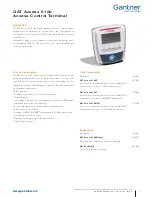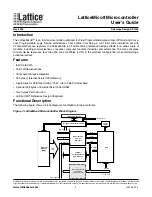
CAN Communication
CANopen Application Layer
EPOS4 Communication Guide
CCMC | 2019-11 | rel8759
3-31
3.3.3.4
EMCY Object
Emergency messages are triggered by the occurrence of a device internal fatal error. They are transmitted
by the concerned device to the other devices with high priority, thus making them suitable for interrupt type
error alerts.
An Emergency Telegram may be sent only once per “error event”, i.e. the emergency messages must not
be repeated. No further emergency message shall be transmitted as long as no new errors occur on a
CANopen device. The error register as well as additional, device-specific information are specified in the
device profiles by means of emergency error codes defined as to CANopen Communication Profile.
Figure 3-20
CAN communication – Emergency service (EMCY)
3.3.3.5
NMT Services
The CANopen network management is node-oriented and follows a master/slave structure. It requires one
device in the network that fulfils the function of the NMT Master. The other nodes are NMT Slaves.
Network management provides the following functionality groups:
•
Module Control Services for initialization of NMT Slaves that want to take part in the distributed
application.
•
Error Control Services for supervision of nodes’ and network’s communication status.
•
Configuration Control Services for up/downloading of configuration data from/to a network module.
A NMT Slave represents that part of a node, which is responsible for the node’s NMT functionality. It is
uniquely identified by its module ID.
Figure 3-21
CAN communication – Network management (NMT)
The CANopen NMT Slave devices implement a state machine that automatically brings every device to
“Pre-Operational” state, once powered and initialized.
In “Pre-Operational” state, the node may be configured and parameterized via SDO (e.g. using a configura-
tion tool), PDO communication is not permitted. The NMT Master may switch from “Pre-Operational” to
“Operational”, and vice versa.
In “Operational” state, PDO transfer is permitted. By switching a device into “Stopped” state it will be forced
to stop PDO and SDO communication. Furthermore, “Operational” can be used to achieve certain applica-
tion behavior. The behavior's definition is part of the device profile’s scope. In “Operational”, all communica-
tion objects are active. Object Dictionary access via SDO is possible. However, implementation aspects or















































